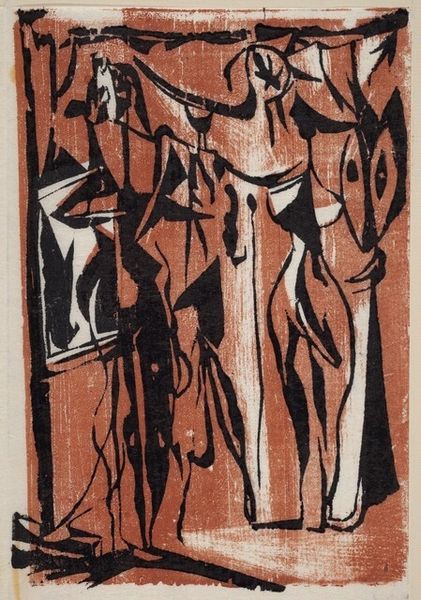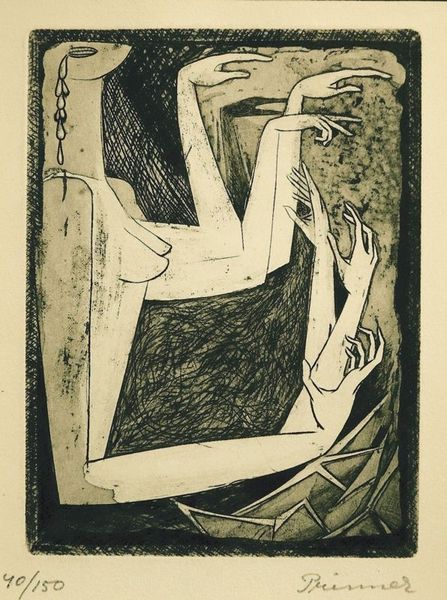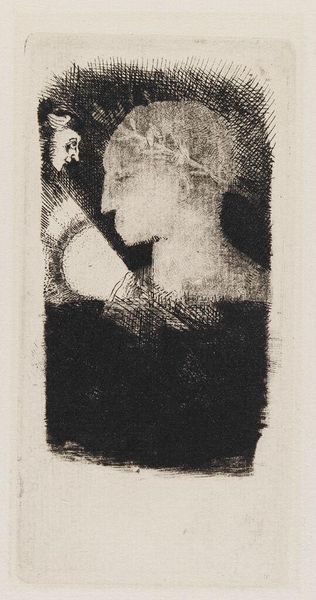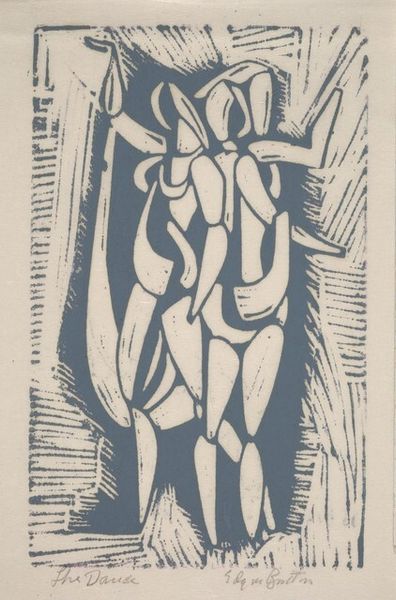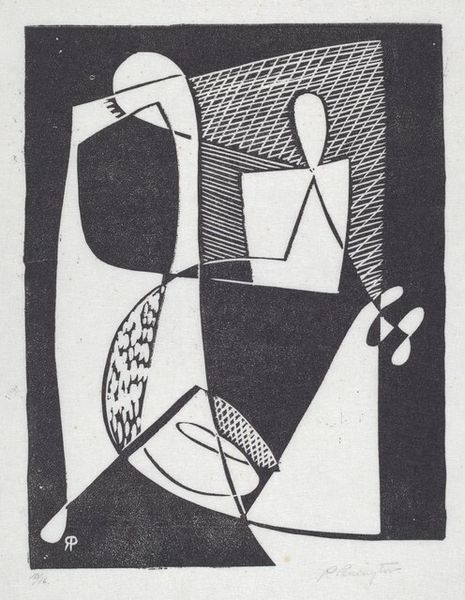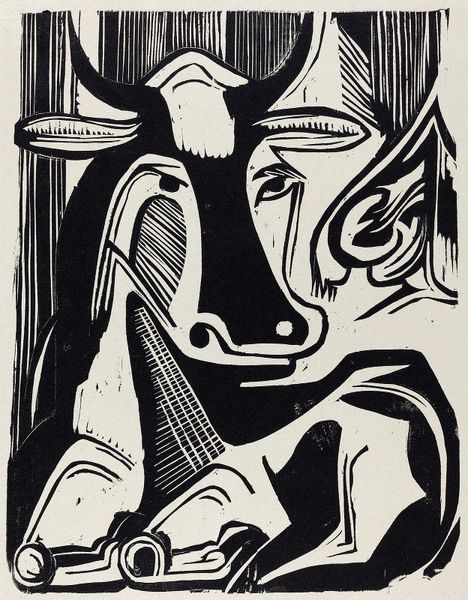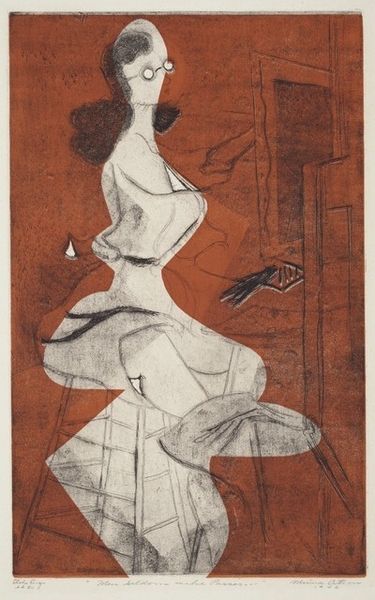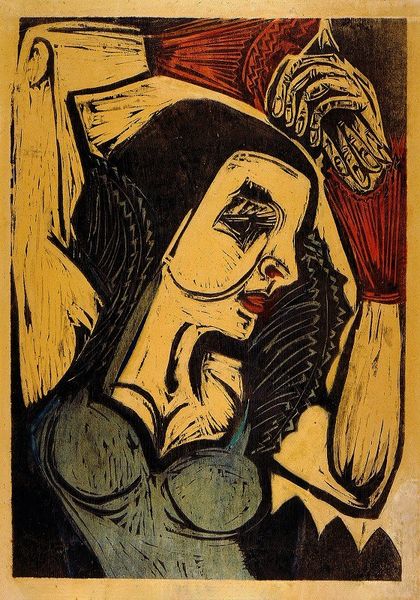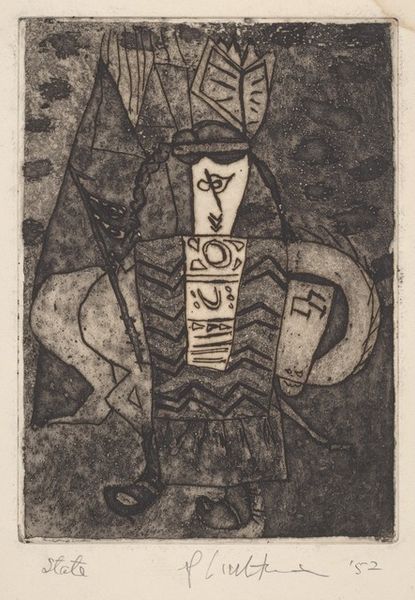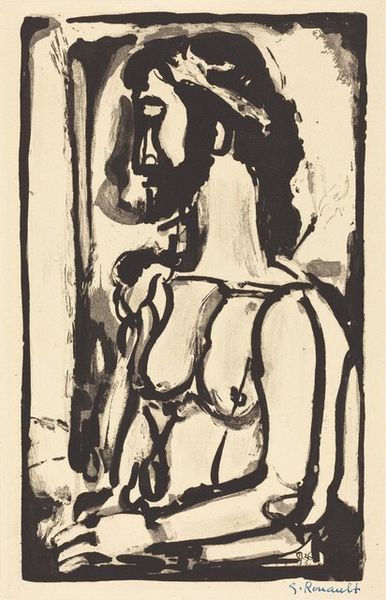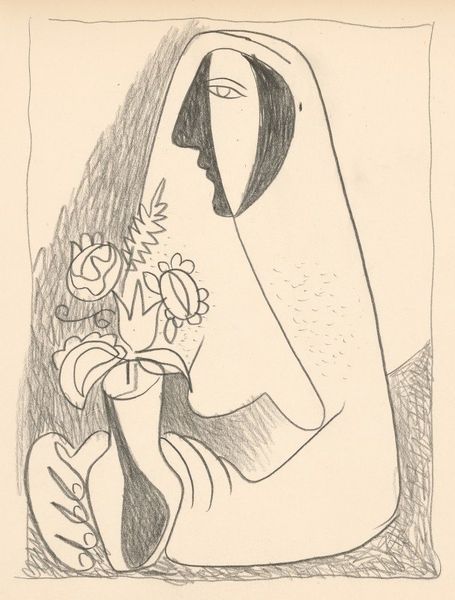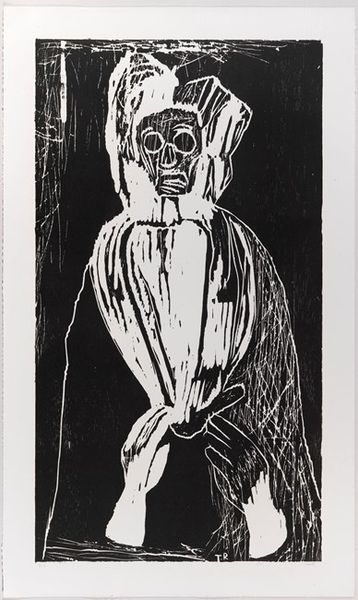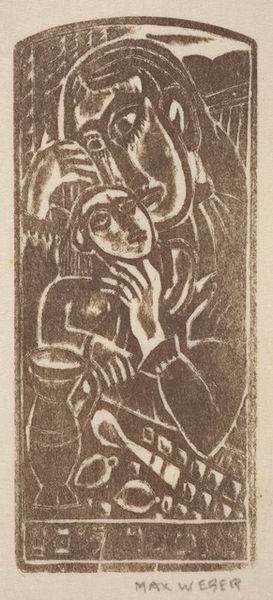
drawing, print, etching, ink, engraving
#
drawing
# print
#
pen sketch
#
etching
#
pencil sketch
#
figuration
#
form
#
ink
#
line
#
nude
#
engraving
#
modernism
Copyright: Anton Prinner,Fair Use
Curator: This etching by Anton Prinner, titled "La Femme Tondue," dates to 1946. It's a powerful piece addressing the fraught subject of women punished for fraternizing with German soldiers during the Second World War. Editor: The stark contrasts immediately draw you in, don’t they? There’s a certain angularity to the figure, a geometric simplification that creates a sense of… vulnerability, maybe? Curator: Absolutely. The title itself, "The Shorn Woman," reveals a practice of public shaming. Often, women were forcibly shaved as a mark of humiliation. This print reflects on the collective trauma and societal judgment following the war. The composition deliberately echoes a religious iconography of martyrdom. Editor: I see that, the long neck extending upwards as if reaching, and those stylised hands – one almost floating, detached. It creates a disquieting tension against the flat planes of the torso. Is that background suggesting a prison, perhaps? Curator: Possibly, or a mirror. Prinner seems less concerned with literal representation and more focused on the symbolic resonance of form. It suggests confinement but also self-reflection. What societal constructs imprisoned her? What judgments reflect back at the viewer? This engraving makes the viewer uneasy because its symbolism goes well beyond merely depicting a punishment. Editor: It’s interesting how the lack of detail, particularly in the facial features, contributes to that unease. It prevents us from individualizing her. She’s become an emblem, almost. It removes the subject and turns her into a tragic reminder. Curator: Exactly. By depersonalizing the figure, Prinner invites us to consider the systemic nature of the accusations and collective blame assigned to these women. It forces us to contemplate broader issues of power, gender, and historical trauma. Editor: A poignant reminder of how individual lives become tangled in the web of larger historical narratives. The lack of facial detail in her face somehow seems intentional. Curator: Indeed, and Prinner's stark formalism, those hard lines, underscores the brutal reality it conveys. Editor: A difficult but compelling work—the kind that lingers in the mind.
Comments
No comments
Be the first to comment and join the conversation on the ultimate creative platform.
